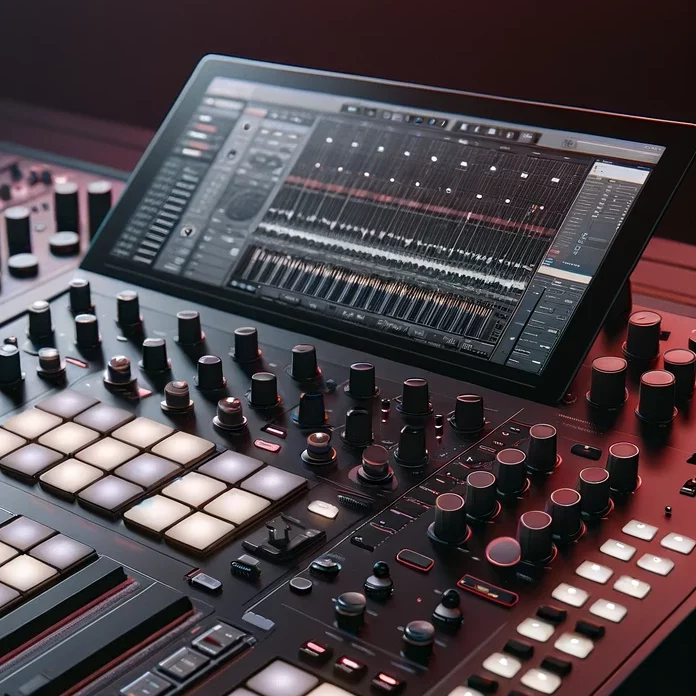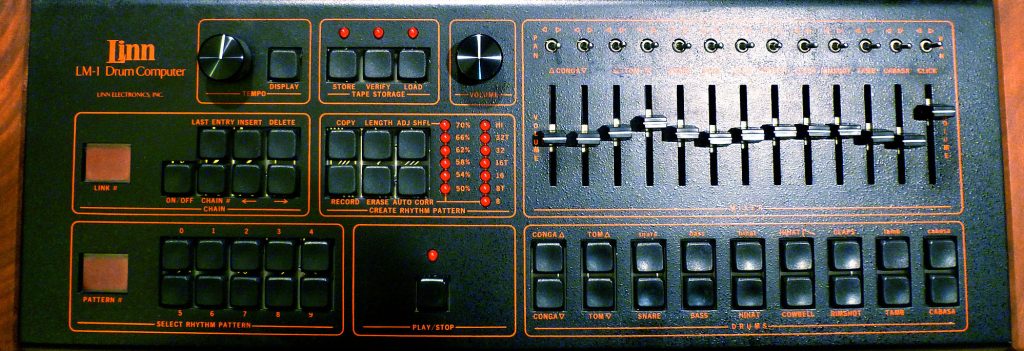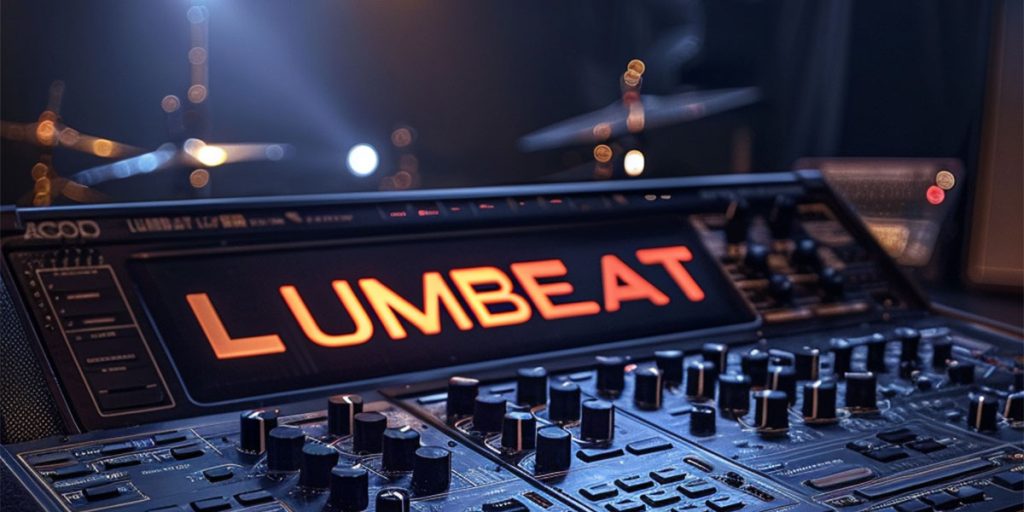
The drum machine, an indispensable tool for modern music production, has evolved significantly since its inception, influencing various music genres from hip-hop to electronic dance music.
Historical Background
The origins of drum machines can be traced back to the mechanical innovations of Ismail al-Jazari in the 13th century, whose pioneering inventions laid the groundwork for automated rhythm production. It wasn’t until the 20th century, however, that the concept began to evolve significantly with the introduction of electronic instruments.
Leon Theremin’s Early Innovations
Leon Theremin was one of the earliest innovators in this field. In 1930, under the guidance of composer Henry Cowell, he developed the Rhythmicon—the first programmable drum machine. Despite its innovative design, the Rhythmicon was ahead of its time and initially failed to gain traction.
The machine had the capability to mechanically reproduce rhythms, marking an early exploration into what would eventually become a crucial tool in music studios worldwide. This period heralded the shift from mechanical ingenuity to sophisticated electronic rhythm machines.
Transition to Electronic Mastery
As the 20th century progressed, the vast potential of drum machines began to unfold. Pioneering figures such as Harry Chamberlin were instrumental during this period. His significant innovations, particularly in the late 1940s, marked a new era in music production. His creation, the Model 100 drum machine, was a marvel of engineering. Encased in a wooden cabinet, this machine featured fourteen tape loops that gave musicians unprecedented control over drum patterns by altering tape speeds to adjust tempo.
Chamberlin’s work with tape-loop-based rhythm production established a vital foundation for the technological leaps that would follow in drum machine development. His initial explorations in rhythm production, although later overshadowed by his work on the Mellotron, were crucial. They not only advanced the technology but also significantly influenced the direction of modern music production, demonstrating the transformative power of marrying mechanical ingenuity with electronic sophistication.
Raymond Scott’s 1964 release, “Soothing Sounds for Baby,” marks an unconventional entry in the history of drum machines, targeting not mainstream music but infants and their parents. Despite his extensive background from the Juilliard School and significant innovations, Scott remained largely unrecognized, partly due to his secretive nature. His notable invention, “Bandito the Bongo Artist,” introduced in 1963, showcased advanced rhythm capabilities but failed to gain commercial success. Scott’s pioneering efforts in drum machine technology laid the groundwork for future advancements, though he did not receive widespread acclaim during his lifetime. His work subtly influenced the evolution of music technology
Rise of Drum Machines

Don Lewis, an ebullient entertainer and innovator, significantly shaped the landscape of drum machines Sus primeros encuentros con la caja de ritmos Kinsman Rhythm King encendieron su pasión por integrar la tecnología con la música. Sus modificaciones e innovaciones en varias unidades rítmicas, particularmente en colaboración con Ikutaro Kakehashi, allanaron el camino para avances significativos en la tecnología de las cajas de ritmos, influyendo en la evolución de la instrumentación de música electrónica.
Bur, The 1970s and 1980s marked a golden era for drum machines, driven by the growing embrace of electronic music instruments.
The landscape changed drastically with the arrival of the Roland TR-808 in the early 1980s. Despite initial commercial setbacks, its unique sound carved a permanent niche in hip-hop and electronic music, celebrated for its deep bass and crisp snares. This iconic drum machine not only transformed music production but also became a cultural symbol.
Features and Functionality
Modern drum machines have revolutionized the landscape of music production by blending synthesis and sampling capabilities to offer an extensive range of sounds and rhythmic possibilities. These devices allow users to program intricate patterns, adjust tempos, and tweak sound parameters to create complex rhythms that would have been challenging to achieve manually. Features such as touch-sensitive pads and seamless integration with software sequencers enhance the interactive experience, making music production more engaging and intuitive.

The impact of drum machines on music production cannot be overstated. They have democratized the process, making it accessible to a broader audience without the need for costly studio equipment. Now a staple in home studios worldwide, drum machines enable musicians and producers to experiment and craft music with minimal setup, fostering creativity and innovation across musical genres.
Modern drum machines combine synthesis and sampling capabilities to offer a wide array of sounds and rhythmic possibilities. Users can program patterns, adjust tempo, and manipulate sound parameters to create complex rhythms that were once impossible to achieve manually. Features like touch-sensitive pads and integration with software sequencers have also enhanced the interactive experience of music production.
From Analog to Digital
The transition from analog to digital drum machines marked a significant shift in music production. Digital machines offered greater versatility and complexity in sound production, allowing musicians to create more detailed and varied rhythmic patterns. This era saw the emergence of iconic machines like the Linn LM-1 and the Oberheim DMX, which were used by major artists and producers across various genres.

The transition from analog to digital drum machines marked a significant evolution in music production. Digital drum machines provide enhanced versatility and complexity in sound production, allowing for the creation of more detailed and varied rhythmic patterns. This digital era heralded the arrival of iconic machines such as the Linn LM-1 and the Oberheim DMX, which have been used by major artists and producers across a variety of musical styles. This shift not only expanded the creative possibilities for musicians but also played a pivotal role in shaping the sound of modern music.
The Future of Drum Machines

The evolution of drum machines continues with advancements in technology, integrating AI and machine learning to push creative boundaries further. New models can now learn from user input, generate beats on the fly, and even collaborate with human musicians in real-time, opening up new possibilities for live performances and studio work.
Today, drum machines have transcended their physical form and have embraced the digital age. Apps for iOS devices, such as those developed by Lumbeat, are at the forefront of this transition. These apps provide musicians with unparalleled flexibility and creativity, offering features like Live Pads for real-time performances and Song Mode for structured composition. Lumbeat’s apps are designed to simulate a wide range of drumming styles and techniques, from the intricate rhythms of Indian music to the energetic beats of Afro-Cuban styles.
Integration with Modern Music Production
Lumbeat’s innovative iOS apps integrate seamlessly into modern music production workflows. They offer comprehensive audio and MIDI export options, ensuring that musicians can easily transfer their creations into other music production software. This compatibility is crucial for professional musicians, music teachers, and hobbyists who require reliable and versatile tools for their musical endeavors.

What is a Drum Machine?





